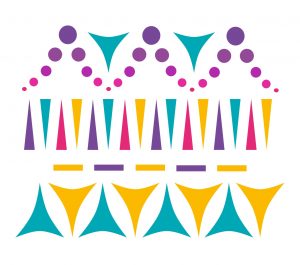We plan to create a secret messaging system that employs a visually pleasing way to deliver encoded text based messages. Our system will take an initial message, and print out an encoded image. When the recipient scans the image, they will get back the original message.
The first part of our system will involve developing and printing out the encoded message. The message will use colors, shapes, and patterns to encode information about which letters are being sent in what order. When the encoded message is scanned with our app, the app will find the different shapes and colors and decode them back into the original message.
This is a cool project because there already exist codes like QR codes and barcodes that encode data in the real world, but they’re ugly and they obviously look like they are encoding something. Our goal is to create something innocuous-looking, that you wouldn’t immediately know contains a hidden message.




